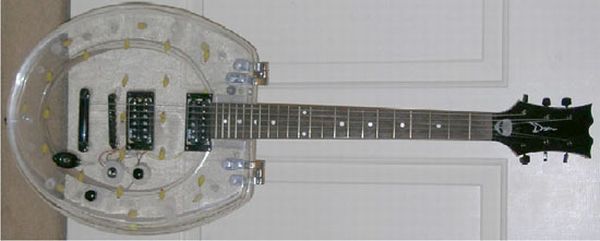|
|
Unusual Guitar
|
• Nut
The nut is a small strip of bone, plastic, brass, corian, graphite, stainless steel, or other medium-hard material, at the joint where the headstock meets the fretboard. Its grooves guide the strings onto the fretboard, giving consistent lateral string placement. It is one of the endpoints of the strings' vibrating length. It must be accurately cut, or it can contribute to tuning problems due to string slippage, and/or string buzz. To reduce string friction in the nut, which can adversely affect tuning stability, some guitarists fit a roller nut. Some instruments use a zero fret just in front of the nut. In this case the nut is used only for lateral alignment of the strings, the string height and length being dictated by the zero fret.
• Fretboard
Also called the fingerboard, the fretboard is a piece of wood embedded with metal frets that comprises the top of the neck. It is flat on classical guitars and slightly curved crosswise on acoustic and electric guitars. The curvature of the fretboard is measured by the fretboard radius, which is the radius of a hypothetical circle of which the fretboard's surface constitutes a segment. The smaller the fretboard radius, the more noticeably curved the fretboard is. Most modern guitars feature a 12" neck radius, while older guitars from the 1960s and 1970s usually feature a 6-8" neck radius. Pinching a string against the fretboard effectively shortens the vibrating length of the string, producing a higher pitch. Fretboards are most commonly made of rosewood, ebony, maple, and sometimes manufactured or composite materials such as HPL or resin.
|
|









